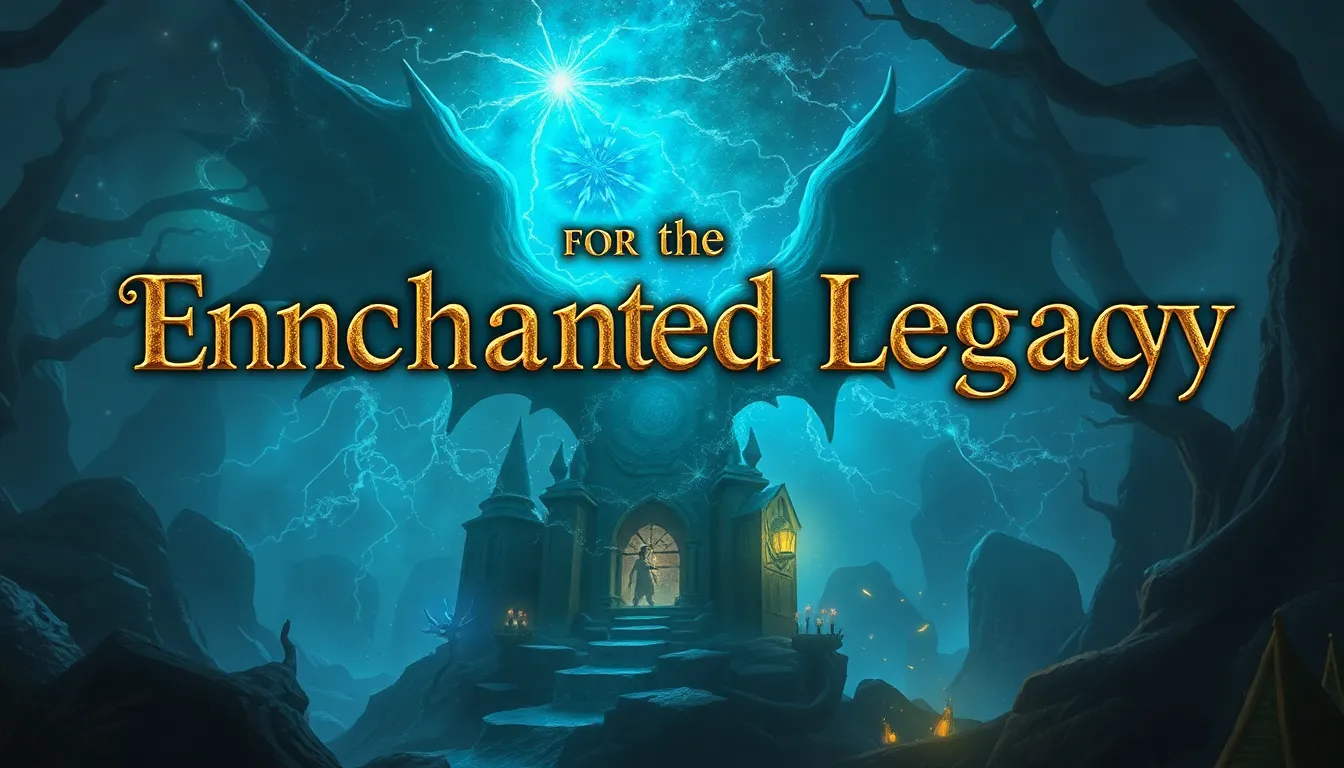The Quest for the Enchanted Legacy: Myths of Heritage
1. Introduction: Understanding the Concept of Heritage
Heritage refers to the traditions, achievements, beliefs, and values passed down through generations. It encompasses cultural practices, languages, and historical narratives that shape the identity of a community. Heritage is vital as it fosters a sense of belonging and continuity, allowing individuals to connect with their cultural roots.
Myths play a significant role in this context, serving as narratives that encapsulate the values and beliefs of a culture. They provide insight into the collective consciousness of a society, shaping its identity and influencing the way people perceive themselves and their heritage.
2. The Origins of Enchanted Legacies in Mythology
Throughout history, many cultures have woven enchanting legacies into their myths, exploring the origins of their traditions and beliefs. These myths often feature gods, goddesses, and legendary figures who embody the values held dear by the society.
Different cultures perceive their enchanted legacies uniquely:
- Western Cultures: Often focus on heroism, individualism, and the triumph of good over evil.
- Eastern Cultures: More inclined to highlight harmony, balance, and the interconnectedness of life.
- Indigenous Cultures: Frequently emphasize nature, spirituality, and the relationship between people and the land.
3. Cultural Heroes and Legendary Ancestors
Cultural heroes and legendary ancestors serve as embodiments of the values and ideals of a society. They act as role models, inspiring individuals to aspire to greatness and uphold cultural traditions.
Some notable heroes from various cultures include:
- Hercules: A Greek hero known for his strength and courage, symbolizing the struggle against adversity.
- King Arthur: A British leader who represents chivalry and the quest for justice.
- Rama: A central figure in Hindu mythology, embodying virtue and duty.
4. The Role of Oral Tradition in Preserving Myths
Oral tradition is crucial for passing down myths and heritage. Through storytelling, cultures maintain their histories, values, and beliefs, allowing them to endure across generations.
The impact of oral traditions includes:
- Preservation of language and dialects.
- Transmission of cultural practices and rituals.
- Encouragement of community bonding through shared narratives.
As stories are retold, they evolve, reflecting the changing values and beliefs of society while keeping the core of the myth intact.
5. Symbols and Artifacts: Material Expressions of Heritage
Symbols and artifacts are tangible representations of cultural myths that reinforce the enchanted legacy. These items often carry deep meanings and serve as reminders of a culture’s history and identity.
Examples of significant symbols and artifacts include:
- The Dreamcatcher: A Native American symbol believed to protect individuals from negative dreams.
- The Ankh: An ancient Egyptian symbol representing life and immortality.
- Totem Poles: Used by Indigenous peoples of the Pacific Northwest to tell stories of ancestry and heritage.
6. The Intersection of Myth and History
The lines between myth and historical fact often blur, as myths may be rooted in real events or figures that have been embellished over time. This intersection can shape historical narratives and influence how societies view their past.
Examples of myths influencing history include:
- The Trojan War: While believed by many to be a myth, archaeological evidence suggests that a conflict resembling the Trojan War may have occurred.
- The Legend of Atlantis: A myth that has fascinated historians and archaeologists, prompting explorations for lost civilizations.
7. Modern Interpretations of Mythical Heritage
In contemporary society, ancient myths continue to resonate, influencing literature, film, and art. Modern interpretations often seek to revive these stories, making them accessible to new generations.
Examples of modern engagement with myths include:
- Literature: Novels and series such as Rick Riordan’s “Percy Jackson” series that retell Greek mythology for young audiences.
- Film: Movies like “Wonder Woman” that draw from ancient myths to create modern narratives.
- Art: Artists using mythological themes to comment on contemporary issues.
8. The Quest for Personal Heritage: A Journey of Discovery
Exploring one’s mythical legacy can be a profound journey of self-discovery. Individuals are encouraged to trace their ancestry and connect with their cultural roots through various means:
- Conducting genealogical research.
- Participating in cultural events and celebrations.
- Engaging with elders in the community to learn about traditions.
This quest not only enriches personal identity but also strengthens community bonds and cultural pride.
9. Challenges in Preserving Myths of Heritage
Globalization and cultural homogenization pose significant challenges to the preservation of myths and traditions. As cultures intermingle, there is a risk that unique narratives may be lost or diluted.
Threats to indigenous myths and traditions include:
- Modernization leading to the decline of traditional practices.
- Loss of language, which often carries cultural significance.
- Commercialization of cultural symbols, which can strip them of their original meanings.
10. Conclusion: The Future of Enchanted Legacies
Myths play a crucial role in fostering cultural pride and continuity. They connect us to our past and help shape our future. As society evolves, it is essential to preserve and celebrate these narratives, ensuring they continue to inspire future generations.
As a call to action, individuals and communities should strive to keep their myths alive through education, cultural practices, and storytelling, safeguarding the enchanted legacies that define who we are.



